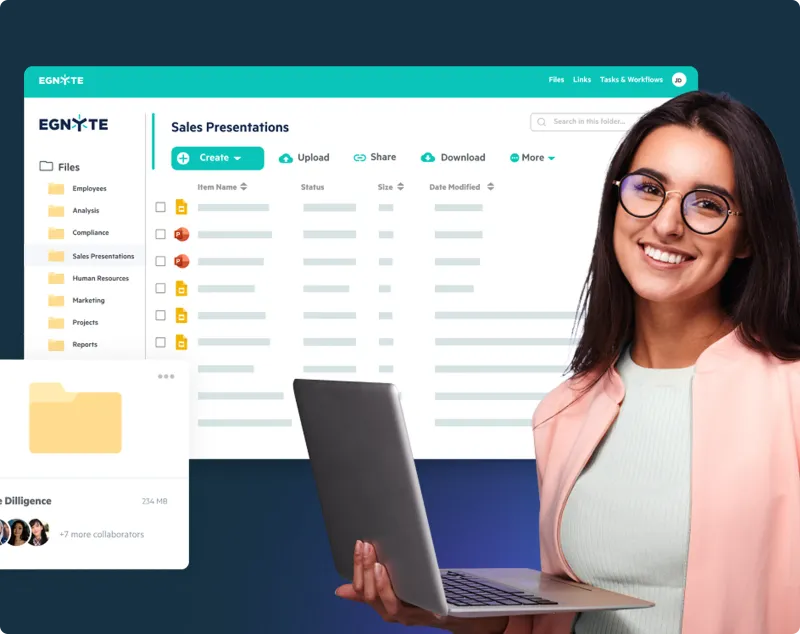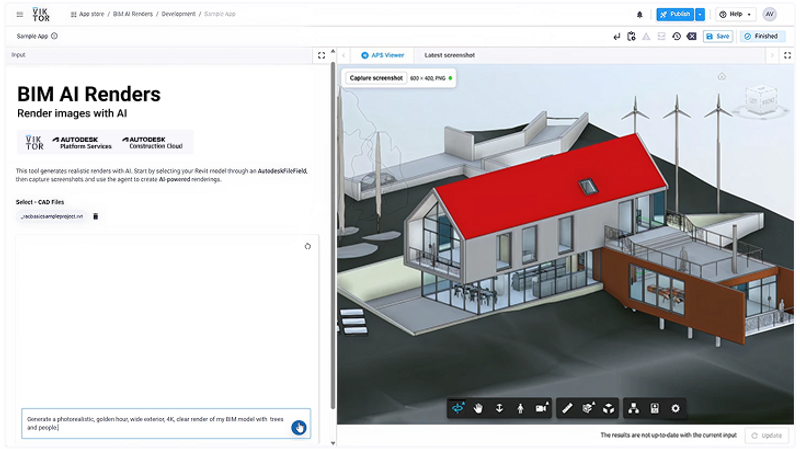Top Carbon Management Tools for the AEC Industry
The pressure for the AEC industry to decarbonize weighs heavier and heavier with each year that passes. To achieve carbon reduction goals, the industry looks at collaborating and leveraging tools that help them implement decarbonization into their workflows.
Understanding Carbon in the AEC industry
Carbon has been dominating content involving sustainability in various sectors, including the AEC industry. But what does it really mean?
We may be familiar with terms like embodied carbon, embedded carbon, or operational carbon. How are they different and who should be responsible for caring about either one?
The answer may seem trickier than one would like, but we can make it easier to understand by mapping the relevance of carbon to a phase in a given project.

Standardization helps us Quantify
Fortunately, the industry has come a long way using data-centric methodologies in developing frameworks and measurement tools that help analyze and report the impact to the environment through the lens of carbon emissions.
For example, during the preconstruction phase, numerous decisions require careful consideration. Integrating additional dimensions like carbon footprint becomes a crucial aspect, necessitating support for teams with user-friendly frameworks to facilitate smoother iterations and progress. Life Cycle Assessments (LCAs), such as those for building material products, enable the issuance of Environmental Product Declarations (EPDs) based on standards (e.g, EN 15804). These aid design professionals and consultants in analyzing product selection, enhancing carbon footprint considerations in early-stage design, specification, and value engineering.

Mapping Carbon Management Tools by Project Phase
1. Planning and Programming (Pre-Design)
Every project is unique, and in order to maximize successful outcomes, the processes and considerations need to match the project’s best needs. This can be a challenging phase even for experienced developers and urban planners, especially when weighing factors like embodied and operational carbon become part of analysis criteria. Citybldr addresses these challenges by enabling developers to speed through feasibility studies, and analyze sites for their suitable scope in respective urban settings. inCitu maps the future built environment into Augmented Reality in real-world scale, and Deepblocks is digitizing the real estate acquisition research.
Even though these AEC tech / proptech products do not directly measure carbon emissions, but the outcome of the tools enable developers to build in areas that would in the long term reduce operational carbon due to improved urban development and design.
2. Schematic Design (Conceptual Design)
As a project’s site is determined, important decisions about its conceptual design become the critical foundations for all further processes in the design and construction of the project. When considering carbon footprint, factual data matters in avoiding assumptions that could mislead design decisions to be mindful about embodied and operational carbon. This is why tools like EPIC Assessment optimize early design proposals by reviewing project scenarios before a project becomes costly to consider rework and redesign. Saving design professionals time consuming research time, EPIC helps a team measure carbon footprint based on the conceptual designs of a project.

Codesign, the first purpose-built tool for the concept design stage of the architectural process, collaborates with 2050 Materials to bring an early-stage carbon calculator to its concepting iPad app for architects. The carbon calculator utilizes building model data and user-selected properties to assess the carbon impact of designs, providing quick feedback on different building and material choices. By combining these calculations with built-in design options, architects can explore and evaluate outcomes in the early design process effectively.

Autodesk Forma is partnering with EHDD to bring the c.scale engine, which powers the EPIC web app, into Forma. This feature will be released in early 2024 and will make early-stage embodied carbon analysis accessible to an even broader audience.
3. Design Development
As the design phase matures into critical decisions, ensuring the performance of the building during operations requires extensive design analysis. Ensuring thermal comfort for occupants and optimizing energy consumption during operations, are just a few factors to consider. Tools like cove.tool aid design professionals with their building system decisions, and measure the operational performance of the building for the respective climate zone and typical use case by its occupants. A case study here highlights how cove.tool visualizes components of the project, and how it aligns with performance goals in real-time, saving collaborators time while successfully integrating decarbonization into the outcomes of the deliverable.

Meanwhile, collaboration with structural engineers is essential for efficiency and keeping project deliverables on schedule, therefore it’s helpful to consider Structure Plus as part of the tech stack. Such tool help AEC professionals consider reductions in project cost and carbon footprint, optimizing design iterations using AI and Cloud-based functionality.
During this phase, many consultants and stakeholders are involved in the decision making process. HBERT is an open-source Revit plug-in that has been used by AEC professionals for measuring the embodied carbons of materials applied within a Revit model, making it another valuable tool to include in the list.

4. Construction Documentation
Ensuring thermal comfort for occupants and optimizing energy consumption during operations, are just a few factors to consider. Certifications such as LEED are well regarded and pursued by building owners and developers, and carbon footprint is an important part of obtaining the certification. Green Badger is designed to simplify compliance and documentation towards gaining LEED certification, making it less costly for design professionals to provide such service to their clients.

Additionally, carbon reporting is still a valid output whether a certification is pursued or not. In certain parts of the world, reporting embodied carbon is critical at permitting level, and that soon is also a requirement in the US as well (USGBC Mandate in California). For these situations, region agnostic tools like Cercula accelerate the capability of producing LCA’s for a given project, whether you’re relying on BoM/BoQ or BIM sources.
5. Bidding and Negotiation (Procurement)
Now that specifications for performance are determined, it’s time to find the products that suit the project. In some cases, the building systems and materials may have already been specified, in other cases, it’s up to the general contractor to match the requirements provided. Product marketplaces can be overwhelming, especially when adding an additional layer such as carbon footprint measurements. That’s precisely why 2050 Materials offers a marketplace that helps visualize carbon footprint at a glance, while still being able to browse a wide selection of products, supporting design intentions originally made in the design phase.

Additionally, concrete can be known for it’s negative impact on embodied carbon, but when sourced sustainably and specified in efficient manner, can still help achieve carbon footprint goals. Platforms like EC3 help measure various concrete mixes based on EPD data, as does 2050 Materials. Such tools aid procurement agents adding value to their ability in reducing carbon footprint for respective projects they’re involved in. This tool is usually used by design professionals in design development, however GCs and construction companies with design teams will find it useful to have the advantage of being able to be proficient in their ability to perform such analysis.

Additionally, tallyCAT, a free and open-access Revit plug-in, supports the export of material quantities from Revit to EC3 and allows synchronization between them. It is a free sustainability plugin by BuildingTransparency.org, and utilizes the EC3 database to empower users in selecting project-specific materials, evaluating opportunities for embodied carbon reduction, and generating charts and reports seamlessly within Revit.

6. Construction Phase
The boots are on the ground, and the clock is ticking. Safety and wellbeing are now some of the most important factors in construction, and teams able to safely manage and support their labor professionals to arrive at the job site and at home is a critical responsibility. Weather is often times unpredictable, and taking risks just to stay on schedule should not be a norm. Tools like Ehab provide weather data instantly, and responds immediately to construction schedules. Such insights empower construction managers to safely plan while remaining as efficient as possible provided circumstances. How is this linked to carbon emissions? Well, efficient planning means less waste, which equals reduced carbon footprint.
Taking carbon accounting more directly, it’s now a great opportunity for construction companies to report their carbon footprint on projects. Logistics in material sourcing, waste management, these all add up. QFlow takes the guesswork out of the equation and delivers data on actual construction supply chain activity for every type of project. Waste activity is also measured, helping construction companies stand out when it comes to winning bids for being accountable for their carbon footprint and environmental impact.

One Click LCA is another carbon management tool that everyone in the construction industry should know about. Life cycle assessment involves evaluating the environmental impact of a product or project throughout its entire life cycle, from raw material extraction to production, use, and end-of-life disposal. “One Click LCA” aims to simplify the LCA process, making it more accessible and efficient. Users can input data related to materials, construction methods, and other project aspects, and the tool provides insights into the environmental performance, such as carbon footprint and other environmental indicators.

Additionally, Architect Allford Hall Monaghan Morris (AHMM) has developed an open-source Excel-based toolkit, the Delivering Net Zero in Use Toolkit, in collaboration with UCL’s Institute of Environmental Design and Engineering. The toolkit allows for coordinated and visualized carbon data tracking across all stages and disciplines of a building project, assisting with whole life carbon reporting from project inception through operation. The tool is aligned with sustainability review frameworks and generates visualizations to help clients and consultant teams assess environmental impacts and set realistic targets, offering iterative decision support throughout a project's life. There are no plans to integrate it with BIM or other design software, although data can be imported into the programme from the building life cycle assessment software LCA One Click.

7. Post-Construction (Operations)
The parties responsible for carbon footprint have now become the real estate professionals owning and managing the projects once designed and constructed. Operational carbon is measured in this phase, and due to the lifetime period of a building, this number can oftentimes surpass embodied carbon, thus it being just as important, if not more.
Building owners and portfolio managers have to report their ESG metrics, and the operational carbon of their managed assets is critical to transparent reporting and efficient auditing. Which is why tools like Gridium help building owners monitor their energy consumption, and help identify operational inefficiencies, optimizing operational carbon throughout the building’s life cycle.
Similarly, Atrius® and Watershed are both designed for building operations, enabling asset owners/managers to overview their building performance in relation to variables such as energy consumption, waste management and carbon footprint (operational carbon). It’s important to note that products may seem to overlap in this space, and truly the differentiating factors become the user experience as well as pricing model, appealing to a variety of users.
Important note to readers
The software products mentioned in this article have been sourced from the web and the growing product database at aec+tech, under the Carbon Management and Sustainability categories. If there are tools that would have made their spot on any of the phases, we encourage you to refer the right party to list them here.
Recent Articles
Learn about the latest architecture software, engineering automation tools, & construction technologies

Pioneering Technical Report Management (TRM™) for AEC Firms: A Quire Deep Dive
Learn how Quire founder Kelly Stratton is reinventing technical reporting in our latest aec+tech interview, where its purpose-built TRM™ platform, WordBank-powered standardization, AI-driven Smart Search, quality control, and the Lazarus knowledge engine come together to help AEC, environmental, and CRE teams cut reporting time and errors while unlocking their institutional expertise.

Moving to the Cloud: Egnyte’s Staged Approach for Architecture Firms
As projects grow, AEC firms are rethinking data management and collaboration. This article outlines Egnyte’s six-stage Architecture Cloud Journey—a practical roadmap for moving from on-premise systems to secure, collaborative cloud environments. From assessment to continuous improvement, it shows how to streamline workflows, strengthen security, and future-proof with AI-ready infrastructure.

SaaS Founders: Are You Timing Your GTM Right?
This article was written by Frank Schuyer, who brings firsthand experience as a founder in the software and SaaS world. In this piece, he explores how founders can unlock faster growth and stronger market traction by integrating go-to-market strategy (GTM) from the very beginning of product development—rather than treating it as an afterthought.

The VIKTOR App Builder: Putting Automation into Every Engineer's Hands
The VIKTOR App Builder is changing how engineers automate their work. Built on VIKTOR’s secure, enterprise-ready platform, it lets users turn calculations, checks, and post-processing tasks into shareable browser-based apps—no coding required. In this interview, CPO Stijn Jansen explains why the team created it, how it bridges no-code, low-code, and full-code workflows, and what it means for the future of AI-assisted engineering.